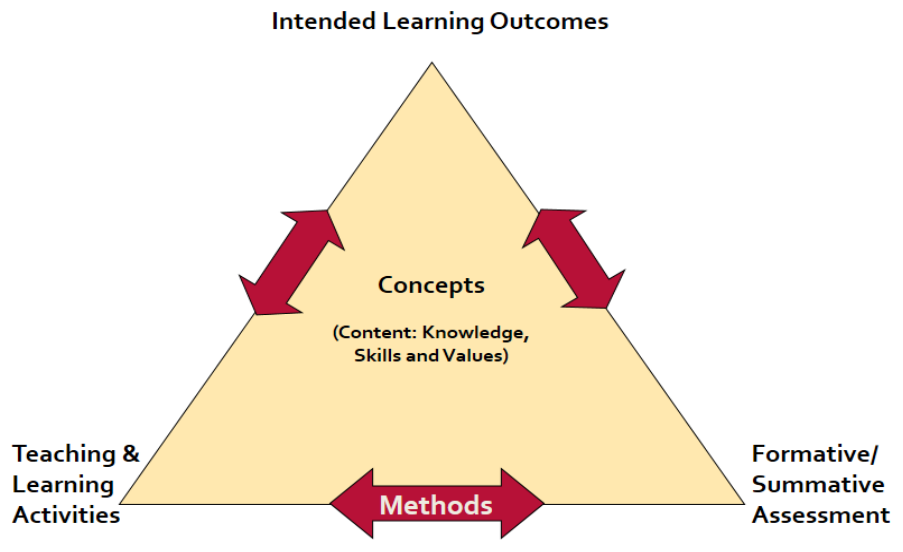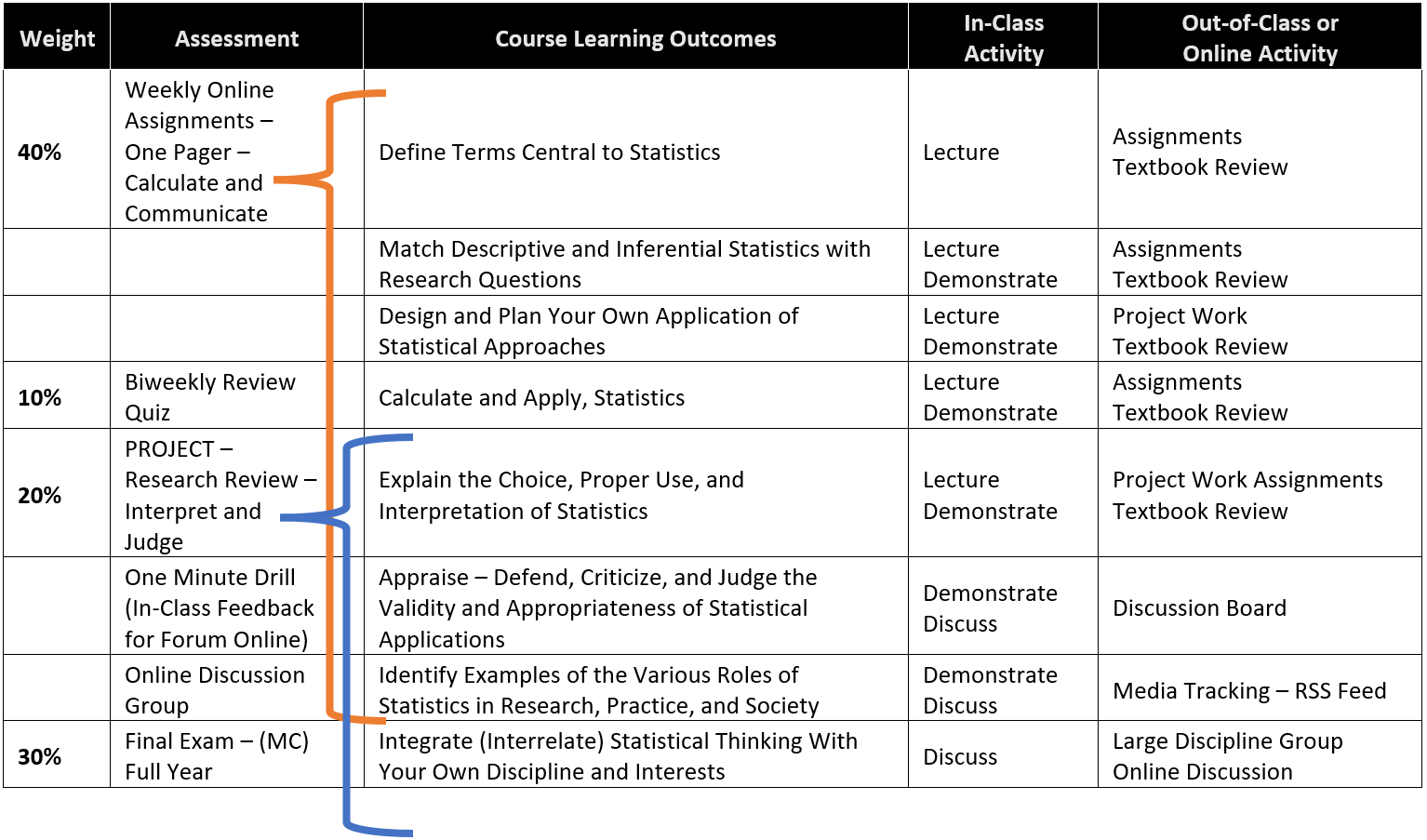When designing a course, it's essential that the intended learning outcomes, the assessments, and the learning activities are aligned with one another.
Alignment involves the intended learning outcomes, assessments, and learning activities working in tandem. At the start of the course, you convey what you want students to know, be able to do, or value, you design assessments to determine their level of outcome achievement, and you provide learning activities that help students prepare for these assessments.

Adapted from Ellis, D. & Light, T. (2006) Teaching Excellence Academy. University of Waterloo
Poor alignment can result in two ways.
- You haven’t provided students with any activities or formative assessments to prepare them for the summative assessments.
- Your intended learning outcomes target a certain level of performance regarding Topic X (for example, a level that is high on Bloom's Taxonomy of the Cognitive Domain, such as "analysing") but your assessments and/or instructional strategies are focused on a different level of performance regarding Topic X (for example, a level that is low on Bloom's Taxonomy of the Cognitive Domain, such as "remembering").
A course in which the intended learning outcomes, the assessments, and the learning activities are poorly aligned will result in diminished learning and increased frustration on the part of students (Leber et al, 2018).
Here’s an example of an alignment chart (courtesy of Clarence Woudsma) in which the instructor shows which assessments relate to which learning outcomes as well as which activities help to support the achievement of each outcome. Note that a single assessment can connect to more than one learning outcome, and a given learning outcome can be assessed by more than one assessment:

(A larger and accessible PDF of the foregoing alignment chart is available.)
The section below uses Bloom's Taxonomy to demonstrate how different strategies and assessments align with various levels of the cognitive domain's hierarchy. Examples have been provided for each of Waterloo's six Faculties.
Further Resources
- Best Practices for Designing Blended Courses (CTE Teaching Tip Sheet)
- Biggs, J. (2014) Constructive alignment in university teaching (PDF). Review of Higher Education 1: 5–22
References
- Biggs, J. & Tang, C. (2011). Teaching for quality learning at university (4th ed.). Maidenhead, UK: Open University Press.
- Leber, J., Renkl, A., Nückles, M., & Wäschle, K. (2018). When the type of assessment counteracts teaching for understanding. Learning: Research and Practice, 4(2), 161-179.
- Maki, P. (2010). Assessing for learning: Building a sustainable commitment across the institution. Sterling, VA: Stylus.
![]() This Creative Commons license lets others remix, tweak, and build upon our work non-commercially, as long as they credit us and indicate if changes were made. Use this citation format: Aligning Outcomes, Assessments, and Instruction. Centre for Teaching Excellence, University of Waterloo.
This Creative Commons license lets others remix, tweak, and build upon our work non-commercially, as long as they credit us and indicate if changes were made. Use this citation format: Aligning Outcomes, Assessments, and Instruction. Centre for Teaching Excellence, University of Waterloo.
Support
If you would like support applying these tips to your own teaching, CTE staff members are here to help. View the CTE Support page to find the most relevant staff member to contact.